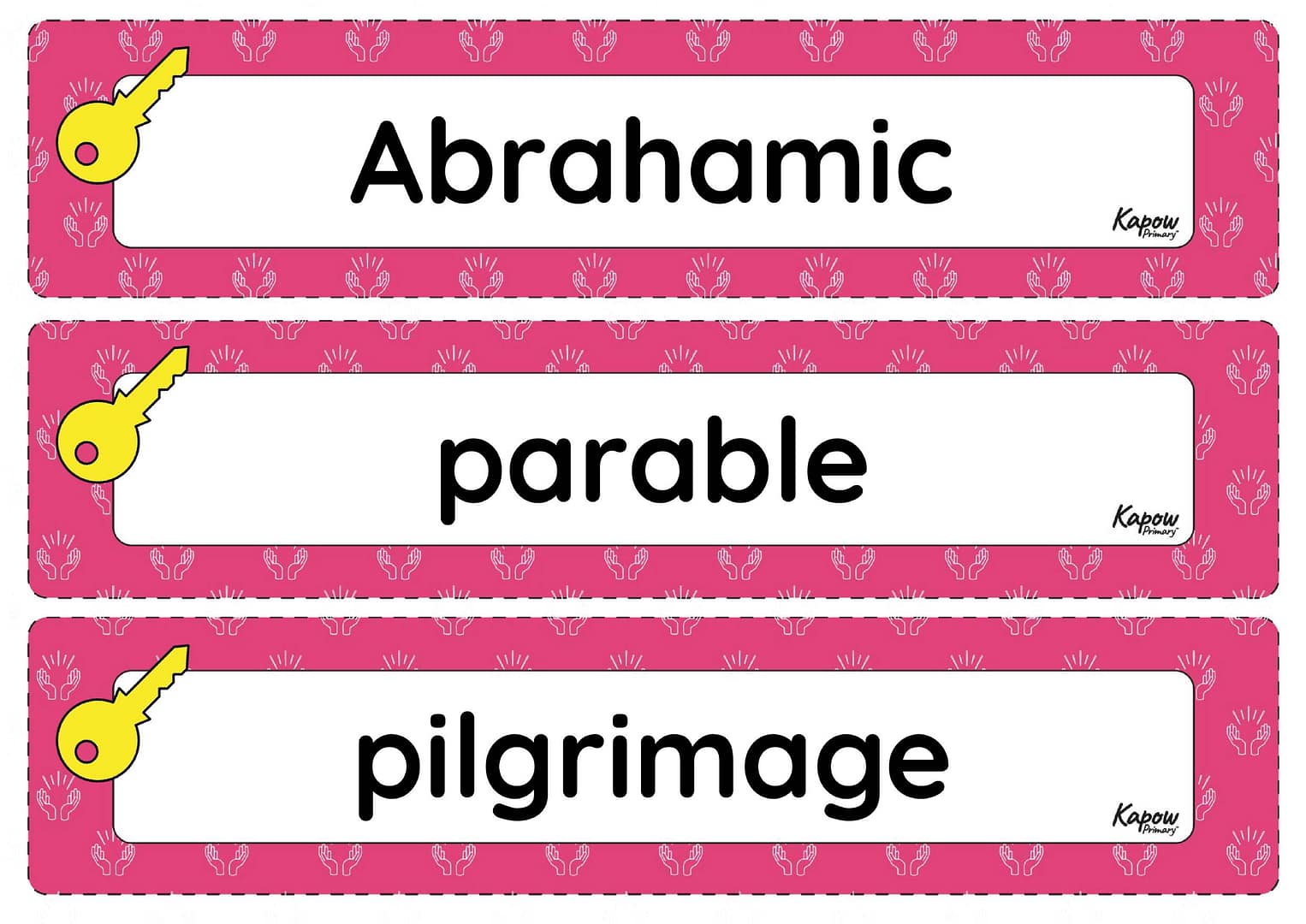
This unit vocabulary display includes keywords from the Year 5 unit Religion and worldviews, Y5, Why are some places in the world significant to believers? and additional unit-specific words that may be helpful in a display.
Key vocabulary is clearly labelled on the display, highlighting essential words that the pupils are expected to retain and reuse in future units. Understanding these words enhances comprehension of the subject and supports understanding of prominent organised worldviews.
See the full Religion and worldviews: Progression of key vocabulary.

Watch our Geography session recording, led by expert Sarah Lawson-Quick, tailored for primary school teachers. Sarah discusses how to use local landmarks, maps, and community data to enrich your lessons and connect pupils with their local surroundings.
Key topics include:
- Integrating local geography into your curriculum
- Connecting pupils with their community
- Tips for effective fieldwork
- Enhancing lessons with Kapow Primary’s Geography curriculum resources
This recording offers practical strategies for teachers seeking to bring their local area into the classroom.
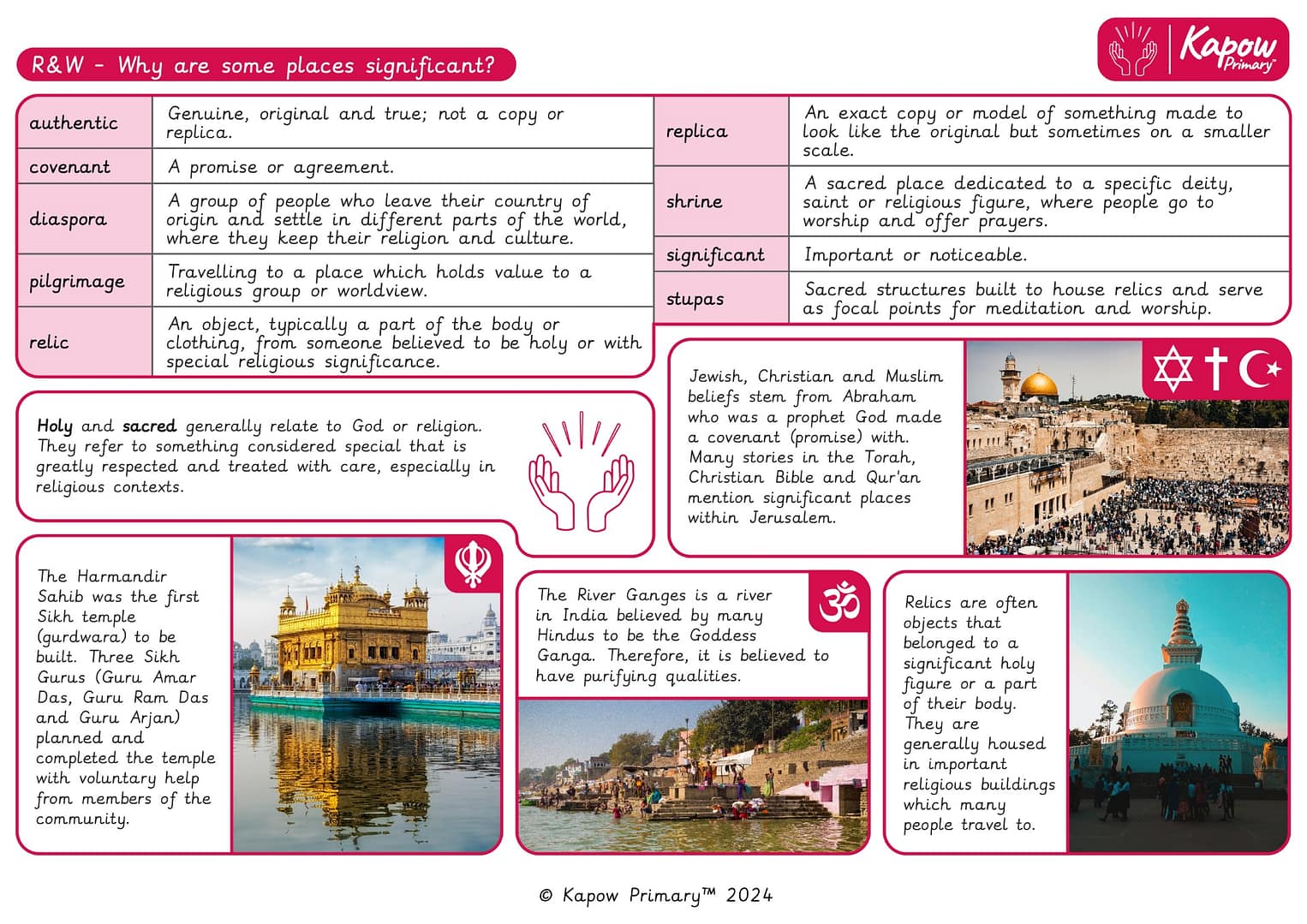
A Knowledge organiser that captures the essential knowledge and skills learnt throughout the unit Religion and worldviews, Year 5, Why are some places in the world significant to believers?
This resource is designed to support pupils as they explore the significance of religious and spiritual places in various faiths. It introduces key vocabulary such as pilgrimage, relic, and diaspora, and explores sacred locations like the River Ganges, the Harmandir Sahib, and Jerusalem. The organiser highlights how different traditions assign meaning to spaces through history, ritual, and belief, making it ideal for reinforcing key terminology and fostering a deeper understanding of the diversity and importance of sacred places.
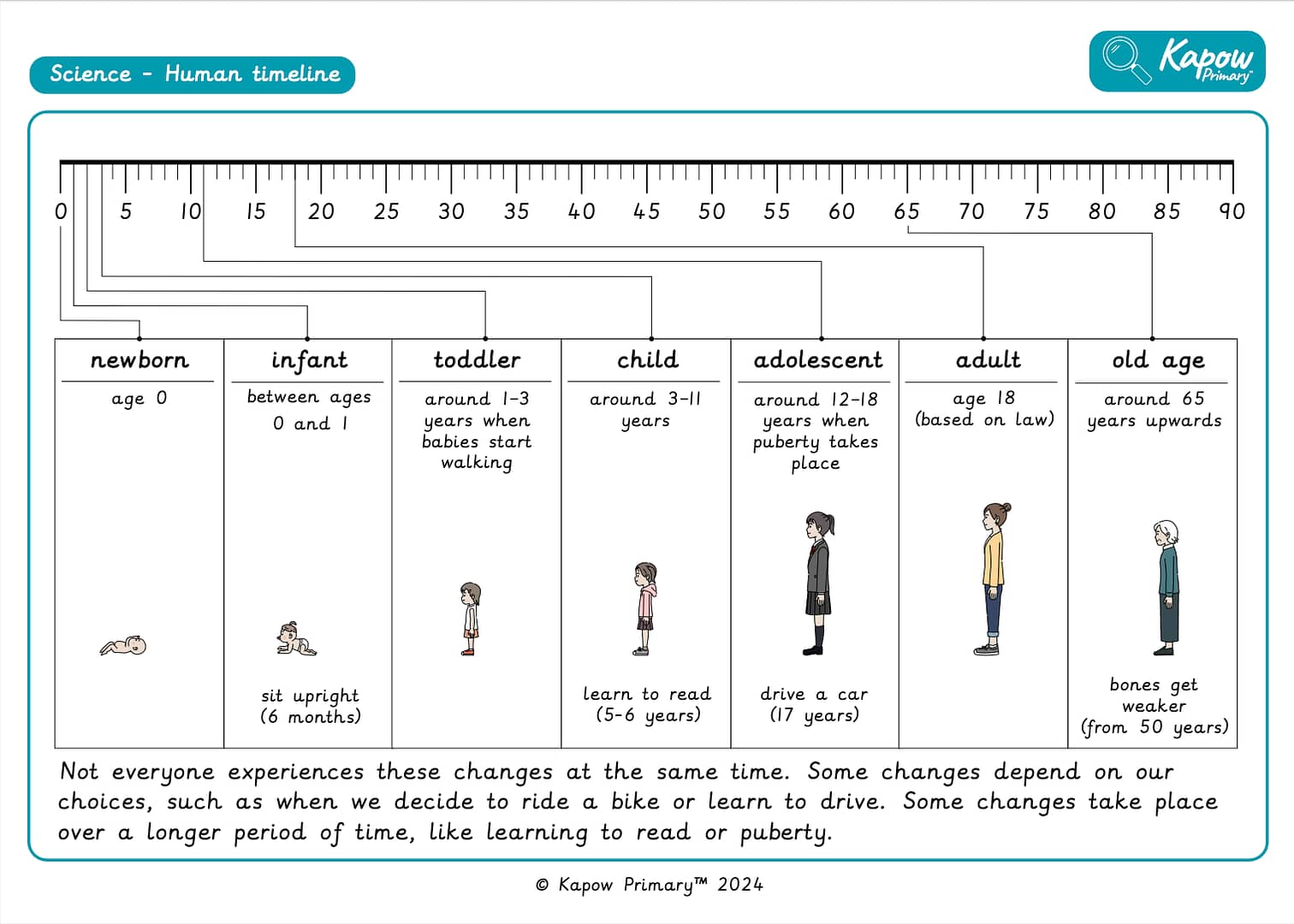
A Knowledge organiser that captures the essential knowledge and skills learnt throughout the unit Science, Year 5, Animals, including humans: Human timeline.
This resource is designed to support the children as they explore the human timeline. It highlights key vocabulary and concepts, including the different stages of life from newborn to old age and how changes occur at different rates for individuals. The resource also explains puberty, detailing physical and emotional changes controlled by hormones. It is perfect for consolidating essential knowledge and fostering an understanding of human growth, development and life stages.

A Knowledge organiser that captures the essential knowledge and skills learnt throughout the unit Science, Year 5, Animals, including humans: Human timeline.
This resource is designed to support the children as they explore the human timeline. It highlights key vocabulary (without naming genitalia) and concepts, including the different stages of life from newborn to old age and how changes occur at different rates for individuals. The resource also explains puberty, detailing physical and emotional changes controlled by hormones. It is perfect for consolidating essential knowledge and fostering an understanding of human growth, development and life stages.
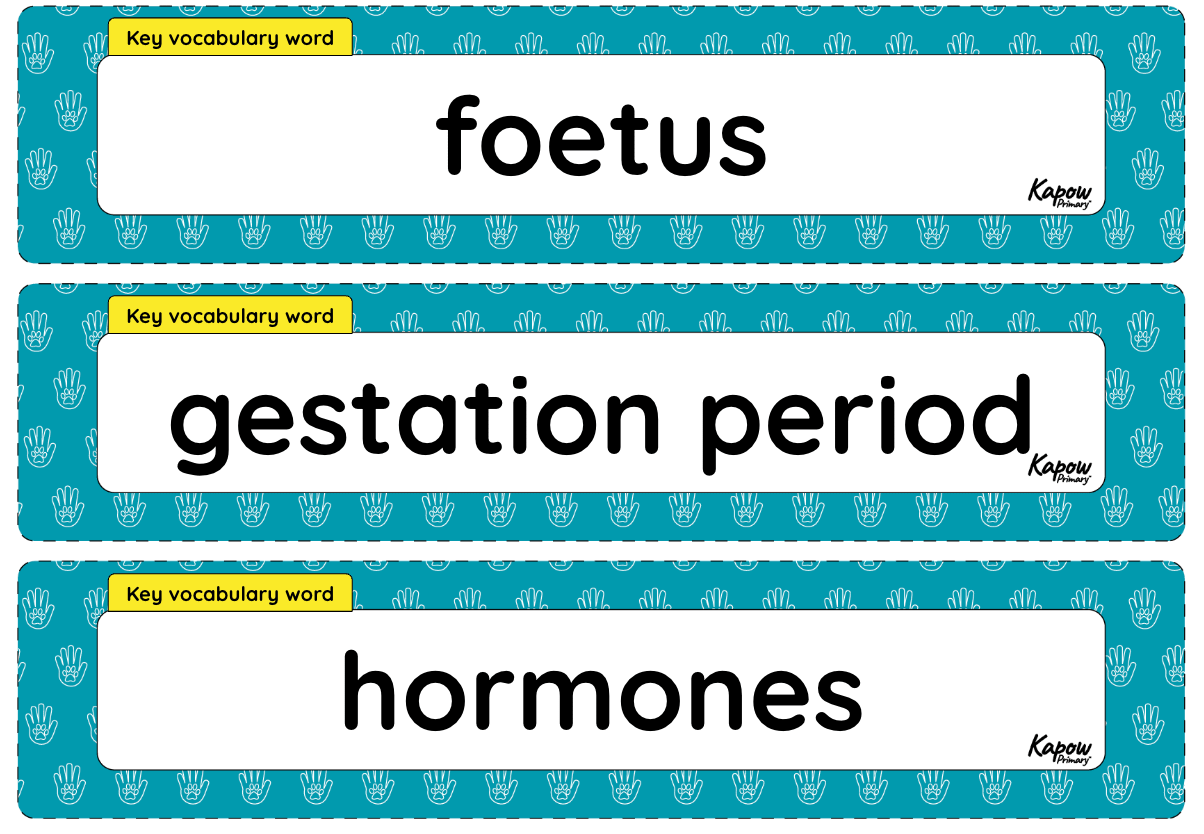
This unit vocabulary display includes keywords from the unit Science, Year 5, Animals, including humans: Human timeline and additional unit-specific words that may be helpful in a display.
Key vocabulary is clearly labelled on the display, highlighting essential words that the pupils are expected to retain and reuse in future units. Understanding these words enhances comprehension of the subject and supports understanding of key scientific concepts and processes.
See the full Science: Progression of key vocabulary.

This unit vocabulary display includes keywords from the unit Music KS2: Instrumental: Caribbean and additional unit-specific words that may be helpful in a display.
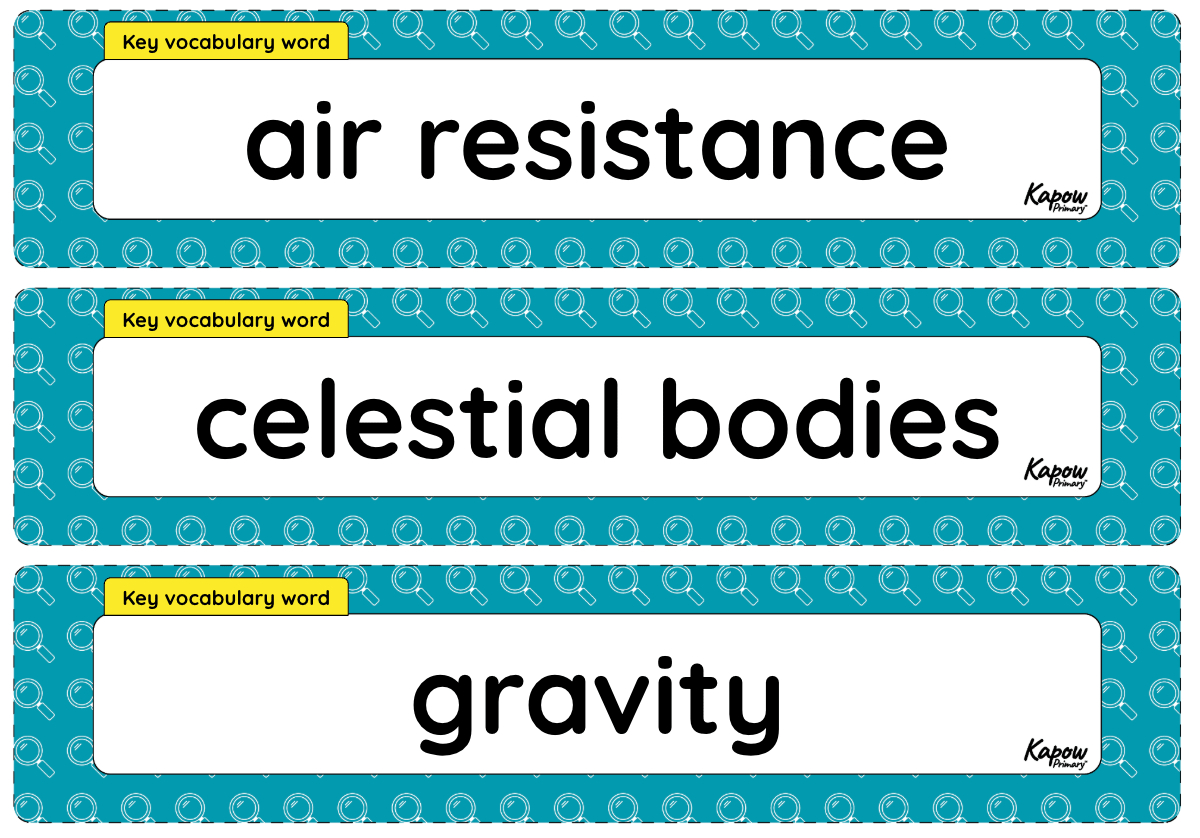
This unit vocabulary display includes keywords from the unit Science, Year 5, Making connections: Does the size of an asteroid affect the diameter of its impact crater? and additional unit-specific words that may be helpful in a display.
Key vocabulary is clearly labelled on the display, highlighting essential words that the pupils are expected to retain and reuse in future units. Understanding these words enhances comprehension of the subject and supports understanding of key scientific concepts and processes.
See the full Science: Progression of key vocabulary.







